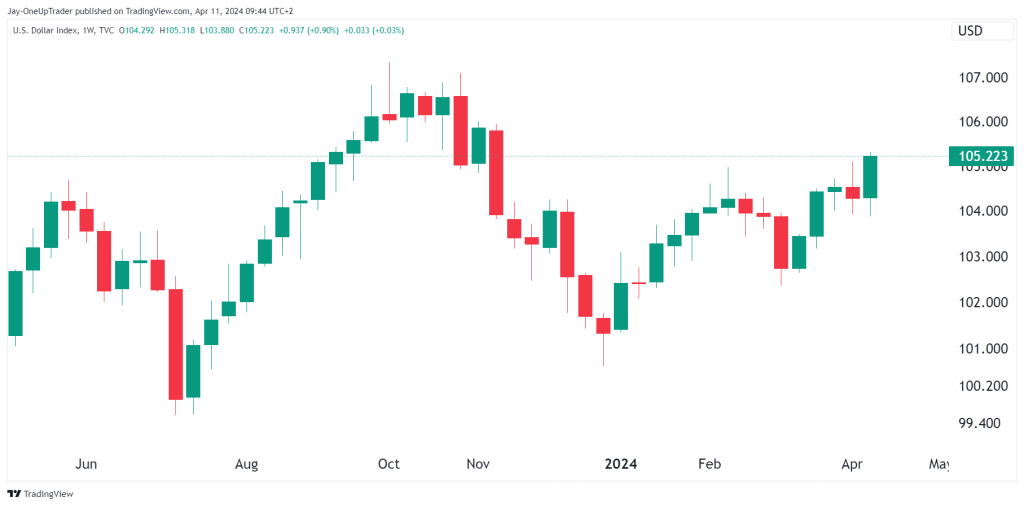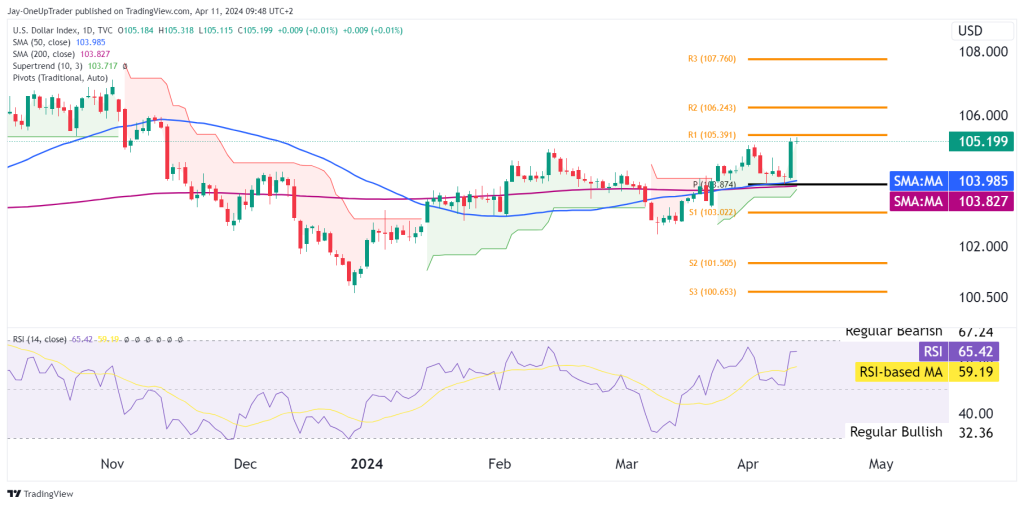The March CPI data has delivered a significant boost to the US dollar, effectively wiping out expectations of a June rate cut by the Fed. This development will prove frustrating for the central bank, though the strong economic growth provides them the luxury of patience.
The high inflation figures have several key implications. Firstly, they will drive policy rate divergences as central banks look to push ahead with easing cycles to address domestic disinflationary pressures and growth needs.
Secondly, the prospect of higher short-term rates globally, or at least less aggressive easing cycles, will generate greater restraint on the global economy. This will be a negative factor for growth-sensitive currencies.
This means the expectations for a Fed rate cut have been lowered. That is why we are seeing the Dollar rally now but what do the technicals say?
Weekly Chart Analysis:
- The price has steadily climbed. Traders should consider long positions, especially with recent inflation numbers, with the recent weekly highs around 105 as a reference point for potential resistance.
- A pullback towards key support levels such as 103, which aligns with the 50-week moving average, may offer a good entry point for long positions.

Daily Chart Analysis:
- The price is trading above both the 50-day and 200-day simple moving averages, a sign that the uptrend is well-supported.
- The Supertrend indicator is bullish, and the RSI is not yet in the overbought territory, suggesting there’s room for the uptrend to continue.
- Pivotal levels such as R1 (105.391) and R2 (106.243) serve as short-term targets for breakout trades above these resistances.
- A conservative approach would involve waiting for retracements towards the pivot point (P) around 104.874 or the 50-day SMA for potential buy entries.

Trade Execution:
Entry Points:
- Aggressive traders can look for breakout entries above the weekly high or R1 pivot level.
- Conservative traders can look for entries on retracements towards the pivot point or the moving averages.
Stop Loss:
- A reasonable stop loss can be set below the recent swing low or under the 50-day SMA to protect against trend reversals.
Take Profit:
- Initial profit targets could be set near the next resistance levels, R1 and R2, with the possibility to adjust higher if the price action suggests a stronger push.
Risk Management:
- As the DXY can be influenced by geopolitical events, economic data releases, and policy decisions by the Federal Reserve, it is crucial to stay updated on such events as they can cause volatility spikes.
- Adjust the position size according to the distance to your stop loss to maintain a healthy risk-to-reward ratio.

